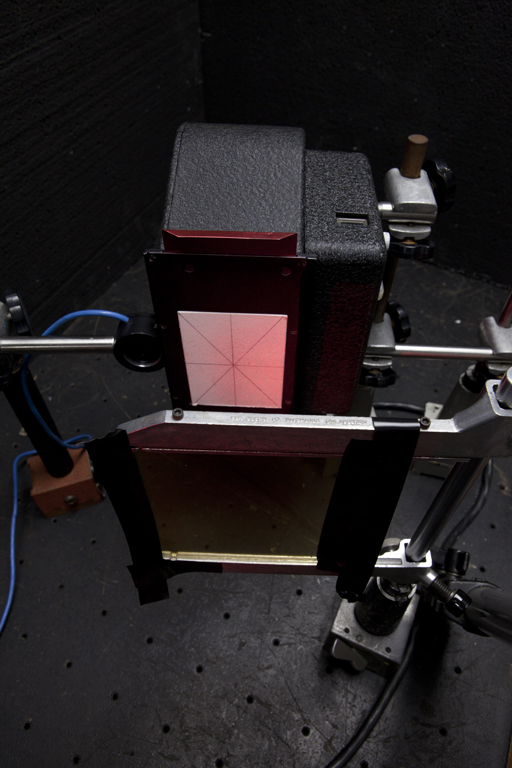
You can identify this skull hologram as mine by the twinkle in its eyes. Both this copy hologram and the master hologram were made with single beam techniques! See the Single Beam Projects Web Page for more background.
The physical skull was lit with the hot center of a spread beam, and a mirror was placed next to it to reflect the weaker part of the Gaussian spread directly to the holographic plate. This hologram was recorded on a BB-640 plate with a 20mW Helium-Neon laser. Unfortunately I don't have a picture of this step.
Then the master hologram was replaced in the bright center of the beam, oriented so that its real image was projected, and the 70mm film transport was placed in the focus so that some of the skull was in front of and some behind the film plane. Again the weaker part of the Gaussian profile was used as the reference beam to provide a lower beam balance ratio for a brighter hologram.

This view shows there is planty of light that misses the master in the plateholder. It is being blocked by the FermiLab graph paper to show where you get the light. (The image being projected by the master is not of the skull, but of a stack of dice, as you can see a 4 focused in the lower left corner of the film transport.)

This batch of skulls was recorded in December 2012, partially for this pass around, but also for my students at Harrington College of Design, as I give them to the kids in my History of Photographic Technology class and Physics of Light classes when we discuss the appropriate chapters, so they know what real holograms are like! A previous batch had been made in 2011, but I used them up handing them out at the MIT ISDH and other points in my voyages in the summer of 2012.
How did I get the twinkle in the eyes? Send me a message with your best guess and I will tell you if you are on the right track!